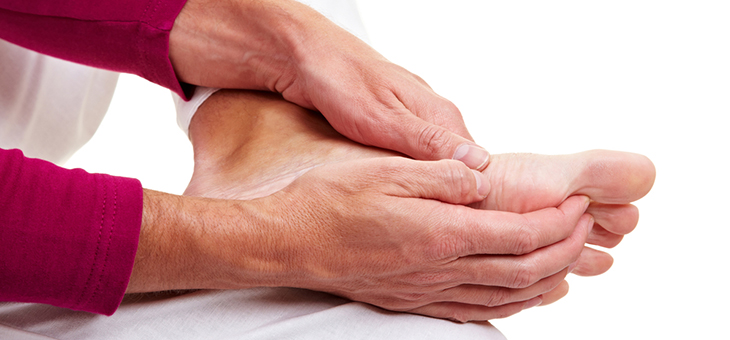In the winter months, it’s easy to blame cold feet on the weather. But according to WebMD, cold feet may be a sign or symptom of these serious health conditions.
Anaemia
Having cold hands or feet may be a sign that you are anaemic. Feeling tired, weak or dizzy or experiencing shortness of breath or an irregular heartbeat are other common signs of anaemia. This occurs when your body doesn’t have enough functional red blood cells to carry oxygen around the body.
Peripheral neuropathy
Do your feet feel cold but seem quite normal when you touch them? It may be peripheral neuropathy, which damages the nerves in your feet. Other common symptoms include a tingling or stabbing feeling in your feet.
This can be caused by injury, vitamin deficiency, autoimmune diseases, some medications, alcoholism, bone marrow disorders or an inactive thyroid. It may also be a complication of diabetes.
Raynaud’s
A Raynaud’s attack occurs when stress or the cold causes arteries delivering blood from your heart to the periphery of your body to spasm and narrow. Restricted blood flow causes your fingers or toes to feel numb with cold and they may even turn white or blue. While both types of Raynaud’s are rare, the more common of the two is Primary Raynaud’s, which generally presents less severe symptoms. Secondary Raynaud’s is more common in older people and is caused by an underlying disease, disorder or illness. As even brief exposure to cold temperatures while retrieving food from the freezer may trigger an attack, it is important to manage the condition by wearing gloves, staying warm and making other lifestyle changes.
A serious risk with this condition is amputation. Some people are unable to feel minor cuts or injuries on their feet, meaning they could become severely infected. More than 4400 diabetes-related amputations occur in Australia each year. To avoid this, check your feet each day, wear shoes and take care of your feet.
Hypothyroidism
If your thyroid doesn’t release the hormones it is meant to, you may feel cold. About one in 20 people will experience a problem with their thyroid in a lifetime. For symptoms and side-effects check out our article, Is your thyroid out of whack?
Peripheral artery disease
If one foot feels colder than the other, it may be a sign of peripheral artery disease. This problem can slow or block blood flow to your feet or legs, making them feel cold. Other symptoms include painful calves or having sores on your feet that won’t get better. The likelihood of peripheral artery disease is greater in smokers, people with high cholesterol or blood pressure and increases with age.
Do you experience cold feet or hands? Have you seen a doctor about the problem?
If you enjoy our content, don’t keep it to yourself. Share our free eNews with your friends and encourage them to sign up.
Related articles:
The flu virus’s best friend
Why your hands might be painful
Things that can go wrong with veins
Disclaimer: This article contains general information about health issues and is not advice. For health advice, consult your medical practitioner

